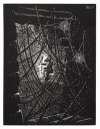Otto
Piene
Otto Piene, a pioneer of the 20th century art movement known as ZERO, is known for his innovative use of light, fire, and air. If you’re looking for Otto Piene original prints and editions for sale or would like to sell, request a complimentary valuation and explore our network’s most in-demand pieces.
Otto Piene art for sale
Discover Otto Piene prints for sale, exclusively available through our private network of collectors. Explore signed and unsigned screenprints, lithographs, digital prints, and rare editioned proof prints by era-defining blue chip artists.
Sell Your Art
with Us
with Us
Join Our Network of Collectors. Buy, Sell and Track Demand
Biography
Otto Piene was a visionary German artist whose innovative works shaped the landscape of art in the Post-War era. Born in 1928 in Laasphe, Germany, Piene's early experiences during World War II profoundly influenced his artistic vision. He co-founded the ZERO group in 1957 with Heinz Mack, later joined by Günther Uecker, aiming to form a new artistic language that utilised light, movement, and space. Piene's exploration of light, fire, and air as mediums created groundbreaking works that continue to resonate in Contemporary Art practices globally.
Piene’s career is marked by unrelenting innovation and a desire to explore the intersection of art and technology. After studying at the Academy of Fine Arts in Munich and the Kunstakademie Düsseldorf, Piene began experimenting with light sculptures and kinetic art, which became central themes in his work.
Printmaking is an extension of Piene's broader artistic practice, reflecting his fascination with light, colour, and the natural elements. The 1972 screenprint Schwarze Iris exemplifies his innovative approach to combining technology with organic forms. The print's bright colour palette, ranging from fiery reds to deep blues, captures a dynamic interplay of light and shadow. The central abstract form, resembling an iris, resembles a fluid pool of liquid, encapsulating Piene's interest in the transformative power of light and his dedication to creating immersive visual experiences. This print, like much of his work, challenges traditional boundaries, blending the realms of science, art, and nature.
One of Piene's most significant contributions to Contemporary Art is his concept of Sky Art, where he used the sky as a canvas for large-scale, ephemeral artworks involving balloons, kites, and light. This was part of his broader interest in creating art that interacts with its environment, challenging the boundaries of traditional gallery spaces. His Light Ballets, kinetic sculptures that manipulated light to create dynamic forms, were equally innovative.
Piene’s work has been exhibited globally, including a retrospective at the Centre for Advanced Visual Studies at MIT, where he served as director from 1974 to 1994. His contributions to the 1972 Munich Olympics and his presence at the prestigious documenta exhibitions in Kassel further cemented his status as a pivotal figure in Post-War Art.































